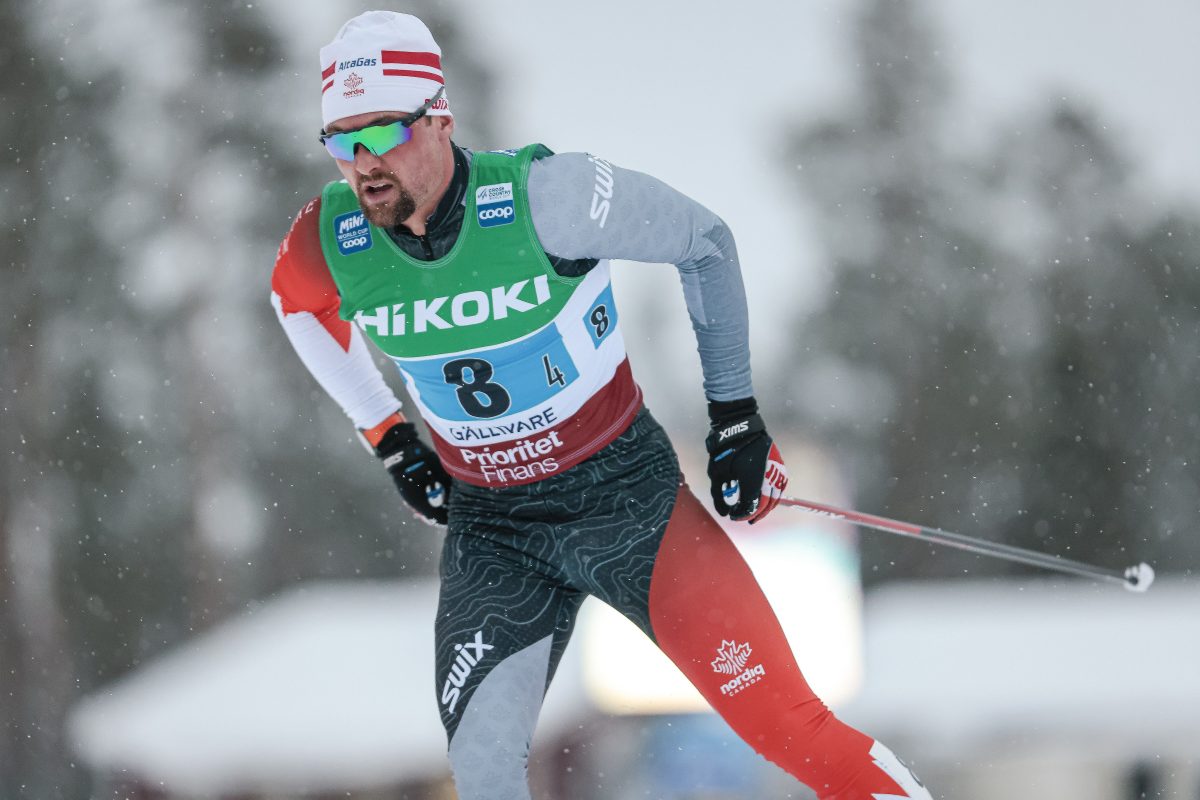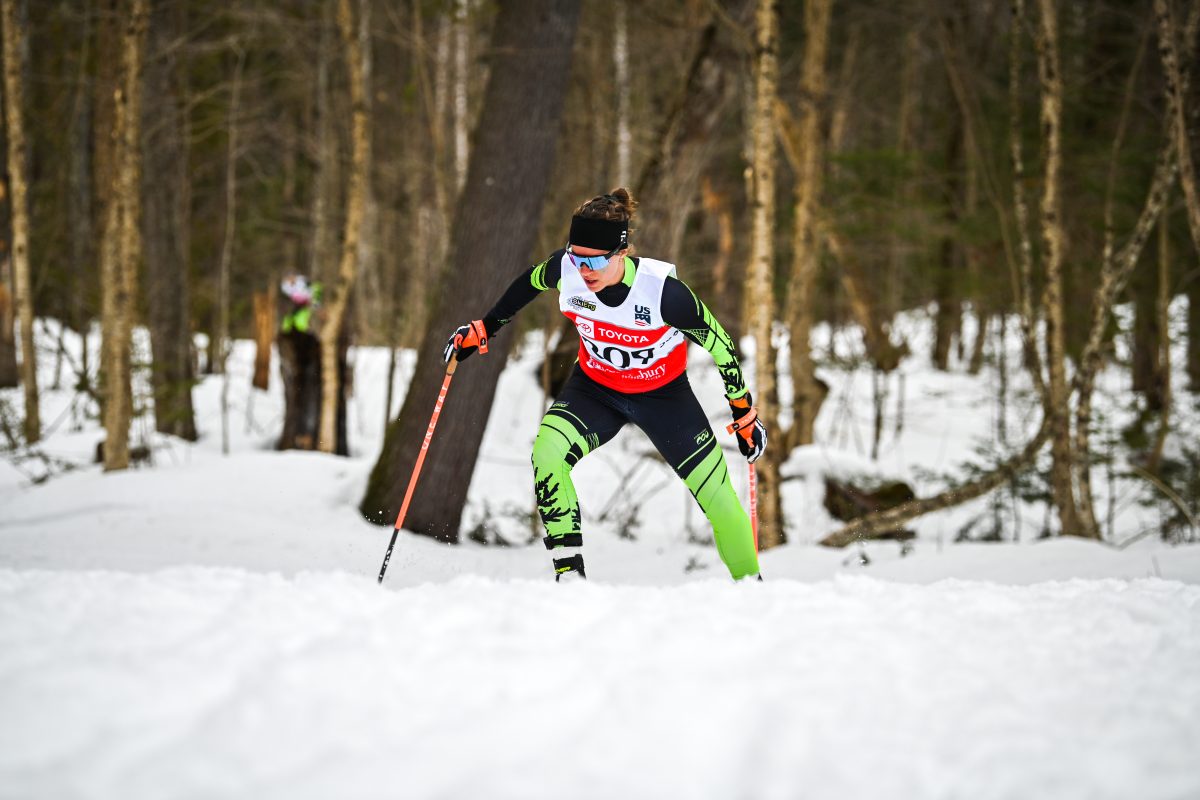Despite a challenging start to the 2023-2024 season, Zak Ketterson (entering his third year on the U.S. B-Team), narrowly qualified for the Minneapolis World Cup—fulfilling his goal of racing, not merely in the United States, but in his own hometown. The Minnesota native has learned from the highs and lows of last year and is bringing “renewed energy and renewed excitement” to what he hopes will be “a do-over.” FasterSkier connected with Ketterson to discuss his new approach to the off-season, training in the Twin Cities, and what to watch for in Ruka.
A Long Road Home
Before we dive into the details his summer training, his expectations for the World Cup opener, and his goals for the coming season, Zak Ketterson takes a moment to reflect on 2023-24. “I was really struggling to put together any kind of good performance,” Ketterson tells me. He was illness-prone (coming down with Covid-19 in early December), fatigued, and “racing so badly in Period I that [he] got booted off the World Cup.” Relegated to the Norwegian domestic racing circuit, he found himself in serious and unexpected danger of missing his chance to start at Theodore Wirth Park—the site first American World Cup in two decades, within walking distance of his Minneapolis home.
It was a possibility Ketterson “didn’t even consider” at this time last year. However, it was one he was determined to avoid. “I was able to pull myself up from rock bottom and race well enough” to reach the starting line in Minnesota, Ketterson says—first, by qualifying for a fresh slate of World Cup starts in Oberhof, Germany and Goms, Switzerland; then, by qualifying for the Oberhof Sprint Quarterfinals (where he ultimately finished 16th) by a bare 0.14 seconds. The difficult and doubt-laden journey made Wirth Park the highlight of Ketterson’s tumultuous season: It wasn’t just “the day itself; to even make it there was a big deal.”
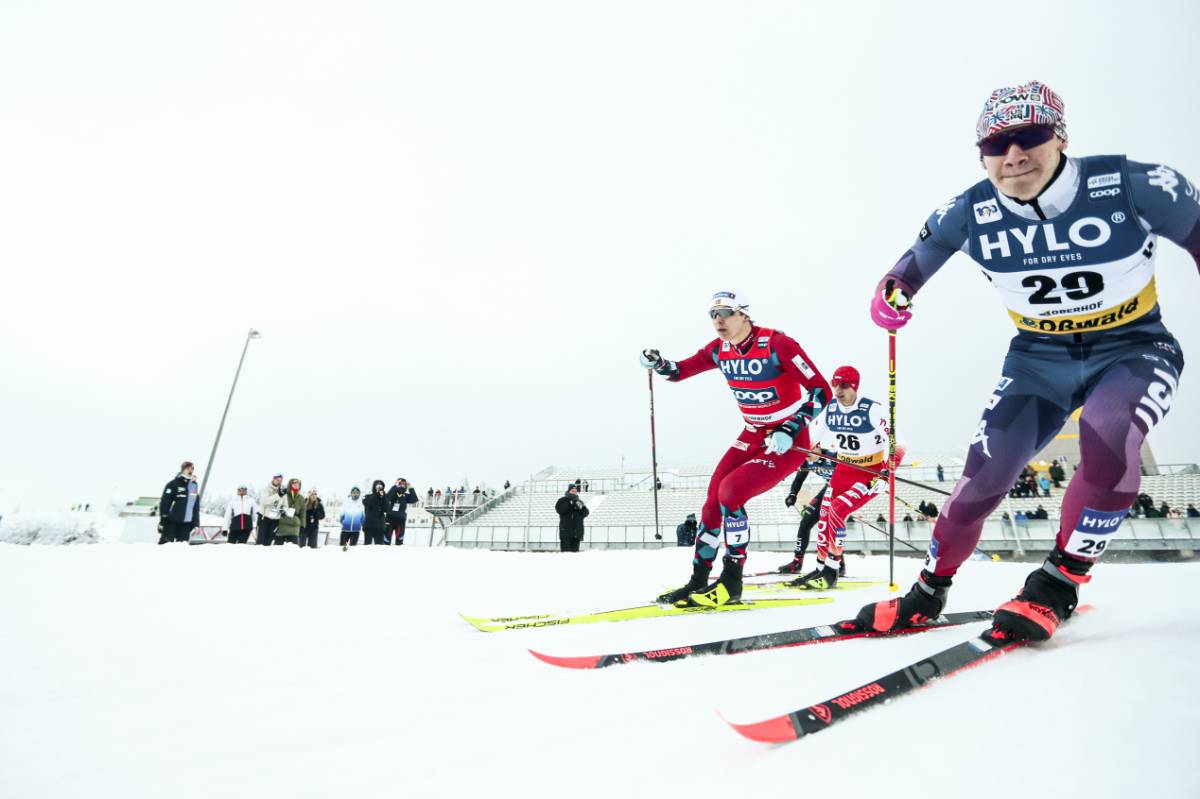
In retrospect, Ketterson has diagnosed overtraining as the culprit behind last year’s challenges. It’s a realization that has reshaped his approach to the summer and fall. Moreover, it has provided a lesson in personal persistence that Ketterson is carrying with him as he embarks on this year’s World Cup circuit. “I overcame it. I can keep that extra resilience in my back pocket… I’m excited to hopefully prove to myself that I can do this.”
New Season, New Strategy
Ketterson described navigating this off-season with a “philosophy shift, from thinking in terms of maximizing quantity, to trying to maximize quality. Any time I did a session, I had to ask myself: ‘What’s the point of this session?’, [instead of] doing sessions for the purpose of just filling out the training log.” He “dialed back [his] volume a little bit” in favor of “going out with intention” and ensuring he could approach key interval sessions at optimal intensity.
Ketterson feels the psycho-physical effects of these changes have been evident. “I’ve focused on […] making sure I’m excited, ready to do every workout,” and “I’ve been a lot happier, a lot more energetic, and a lot more grateful to be training.”
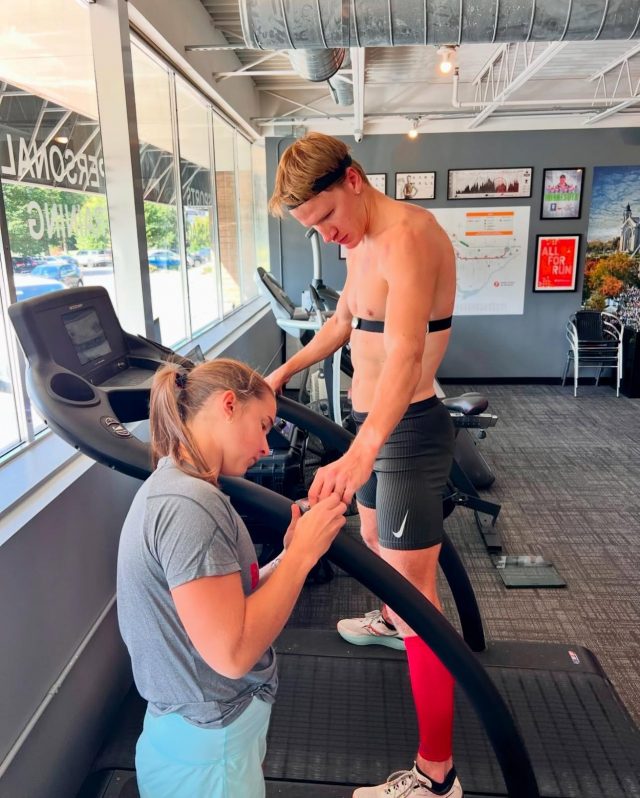
However, he’s also relied on the hard data of regular progress evaluations to ensure he stays on a productive trajectory. This spring, Ketterson introduced a “Standard Session” to his training plan: A treadmill-running interval with a consistent incline, and a series of pre-set pace blocks which increase at five-minute intervals, which Ketterson would complete roughly every three weeks (at the conclusion of each training block). By “taking lactate [tests] after each stage and also tracking my heart rate and perceived effort, I was able to have a pretty good idea of whether I was carrying more or less fatigue that I might have thought, and also whether my fitness was progressing throughout the year.”
The utility of this objective metric proved itself throughout the last eight months: “There were actually several times where I had a bad Standard Session where my fitness or, basically, fatigue was just showing that I wasn’t performing up to the standard of the last time I took the test. When that happened, it was a really easy decision to take an easier period and maybe take two or three days off,” Ketterson reported. He sees these data-driven checkpoints as essential to balancing a long-term training load. Without Standard Sessions, “it can be hard to make sure you don’t get overtrained, because the fatigue is really cumulative.” With its omnifarious symptoms, overtraining “can creep up on you.”
Twin Cities Training
Ketterson’s re-envisioned, intentionalized training program seems to have produced a positive cycle that leaves him with “headspace” to “be a balanced individual outside of sport” which, in turn, “translate[s] pretty well to [his] performance.”
“I perform best when I’m happy,” he summarizes.
Ketterson’s choice to live in Minneapolis—unique among the U.S. A- and B-Team athletes, who largely spend their summers in either the Northeast, the Mountain West, or Alaska—contributes to both the strength of his training and his appreciation for life beyond the trails. He explains: “It’s where I’m from, it’s where my family is; my wife [Julie Ensrud] and I have a house there,” which enabled the “surreal” experience of enjoying breakfast in their own kitchen before walking to the Wirth World Cup. With an abundance of urban trails and bike paths, Ketterson has a range of training options steps from his front door—and can “go to see some Timberwolves games, walk around the city, swim in [his] parents’ pool,” and rollerski at Hyland Park, where he learned to cross-country ski. Logging miles there is “really nostalgic […] To have trained there when I was 10 years old, and to be training there now, 17 years later, as a World Cup skier, reminds me how lucky I am.”
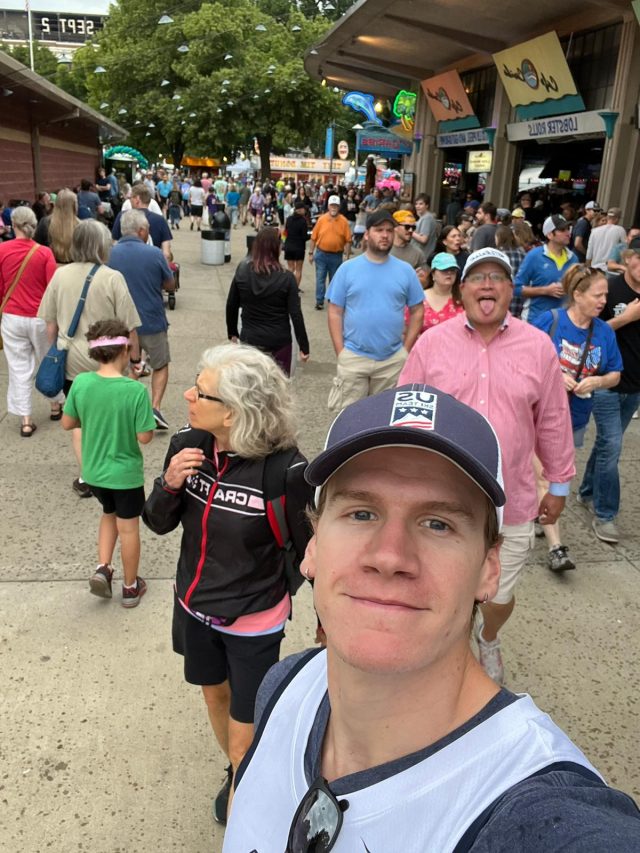
Minneapolis is also the headquarters of Team Birkie, the regional professional group with which Ketterson has competed since 2021, and of which his wife is now Head Coach. In addition to the advantages of training alongside athletes “who, in one [workout] or another, are going to give me a challenge,” Ketterson has consistently benefitted from collaborating closely with the Team Birkie staff to develop tailored deviations from a framework of “universal, good training practices […] Team Birkie has been so respectful of my opinions and of what I’ve learned about myself these last fifteen years. I have the freedom to do what I think makes me the best, and the coaches” support and advance those decisions.
Moreover, the Twin Cities are the geographic and cultural gateway to a regional network of avid Nordic athletes. “The Midwest is maybe the place in the United States with the biggest critical mass of excited skiers—people who love skiing and are excited about World Cup competition.” Ketterson volunteers at several youth development camps in Cable, Wisconsin (and travel camps to Park City, Utah), “mentoring some of the top junior athletes in the region.” Helping to coach the next generation of Midwest standouts is “pretty special,” because he himself attended these camps “three or four times” as a middle- and high-schooler. While “it’s easy to think that if you want to be a really good skier you have to be born somewhere like Anchorage or Minneapolis, seeing those kids from Spooner [and elsewhere in rural Wisconsin], and how much they care,” reinforces that “skiing is a lot more global and accessible” than it is conventionally understood to be—especially after the “huge shift, for people of all ages who are into skiing in the Midwest” prompted by the Minneapolis World Cup. Ketterson reports an “energy flowing around Wirth Park now, even through the summer months,” and states that the venue has bid for a 2028 World Cup race—a powerful incentive for young athletes who could compete there in four years.
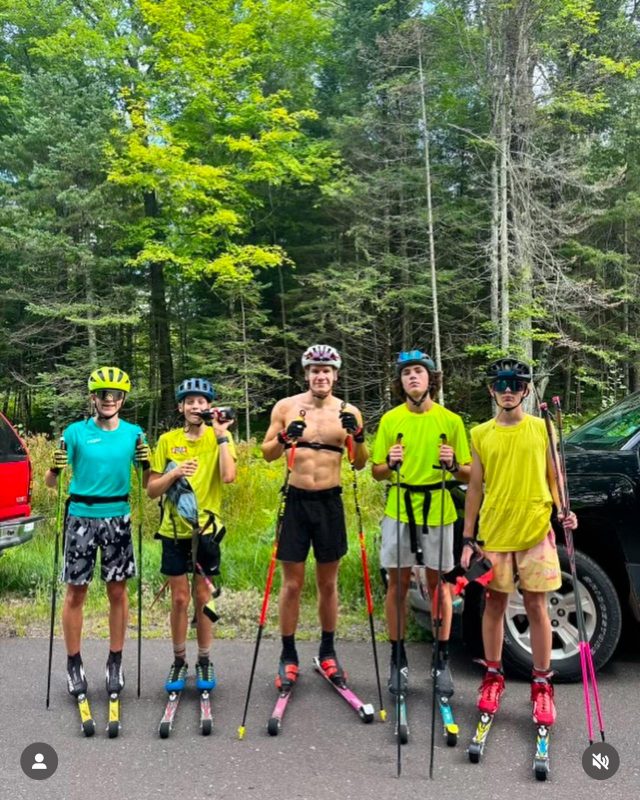
Not Expectations, But Belief
One downside of training in the Midwest is, however, the late arrival of snow. Ketterson approached last weekend’s events Beitostølen as an opportunity to get steady on wax instead of wheels, and “to get that early-race rust out of the way before the World Cup.” It can be “daunting” to start the season with World Cup racing, and the Norwegian opener serves as “a really good opportunity to compete with a pretty high-level—honestly, World Cup-adjacent—field […] there’s so many Norwegian domestic guys who don’t get the chance to race” on the FIS circuit. “I don’t envy them in that it’s a cutthroat environment. But, I do envy them in that they have this ‘local’ circuit that rivals the World Cup in its competitiveness. That’s definitely a big reason why [the Norwegians] are so strong.”
Ketterson’s objective was to at least qualify in the Beitostølen Sprints—a goal he successfully achieved on Friday, finishing 21st overall. Supported by his wife and Norwegian in-laws, Ketterson feels the weekend “went pretty well, all things considered, with how little time [he’s] been able to spend on snow. Especially the Sprint—being able to qualify in that field was a really big accomplishment for [him], and hopefully a good sign of things to come for the rest of the season.”
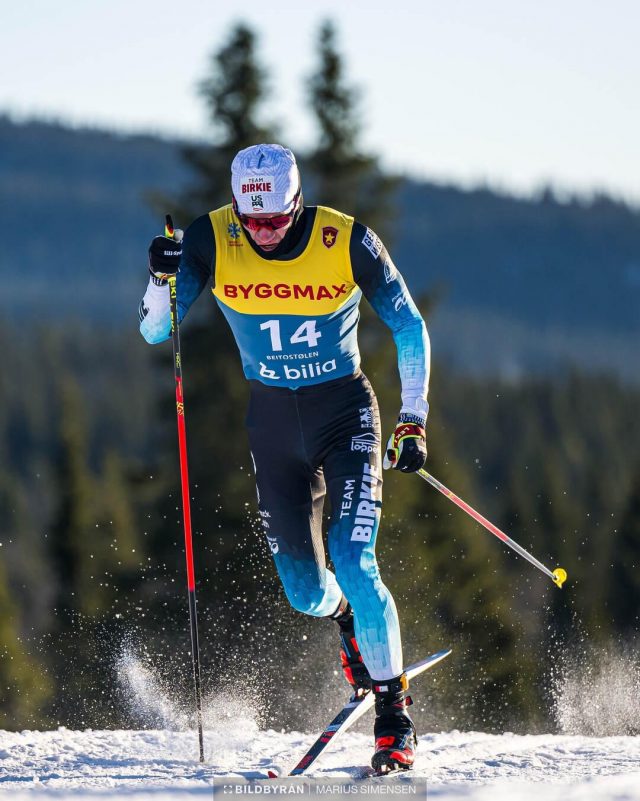
Indeed, as he looks to the World Cup, Ketterson is determined to use the lessons, progress, and resilience of the last year to “be competitive in the races that [he’s] doing.” He finds ‘first day of school’ to be a good metaphor for Ruka. In addition to reconnecting with fellow U.S. team members, some of whom haven’t seen each other since March, the upcoming three days in Finland entail a “shared experience” of anticipation and excitement: “The other athletes have trained just as hard as you have, and they all care just as much as you do, and they are there with similar goals.” While the season start can be “nerve-inducing,” the skiers are among peers who understand and reciprocate the electric attitude of the weekend. “It takes a lot of energy, but it gives a lot of energy.”
After Ruka, “You have to take it period by period,” Ketterson explains. “Starting with Period I, my first and foremost goal is just to race well enough to move on to the Tour de Ski. Hopefully, if I’m racing at a really high level, I can lower my shoulders a bit.” A Sprint Semifinal placement would be ideal: “I’ve made six or seven World Cup Quarterfinals, but haven’t managed to squeeze through one yet.”
Beyond the season start, Ketterson states that the Trondheim World Championships are his “biggest priority.” Between stories from his wife’s family and his own experience living and training in Trondheim through the summer of 2023, he’s heard “so much about [the World Championships in] Oslo in 2011 and how legendary that was,” and anticipates the coming Championships will bring similar energy.
Perhaps more significantly than any single race performance, though, is this season’s “opportunity for a do-over.” Ketterson has clearly reflected on 2023-24, and is ready to compete with “renewed energy and renewed excitement.” It’s an attitude that has only been reinforced by the success elsewhere on the U.S. Men’s Team—success that Ketterson says has not raised expectations but, rather, “belief. When we see Gus [Schumacher] in Minneapolis, J.C. [Schoonmaker] in Ostersund, or Ben [Ogden] in Toblach, the reaction isn’t, ‘Oh, shit, now we need to do that.’ It’s, ‘If those guys can do it, maybe we can do it, too’… Those guys have shown it’s possible. We’ve all bought into this belief that we can do it, and could be the next ones.”
The FIS World Cup will kick off on Friday, November 29th in Ruka, Finland.
FasterSkier thanks Zak Ketterson for his time. Some comments have been edited for length and clarity.
Luke Dykowski
Luke Dykowski is an alumnus of the University of Minnesota Nordic Ski Club ‘22, and is the Founder and Nordic Coordinator of the Midwest Collegiate Ski Association. He is currently a law student at Georgetown University.

